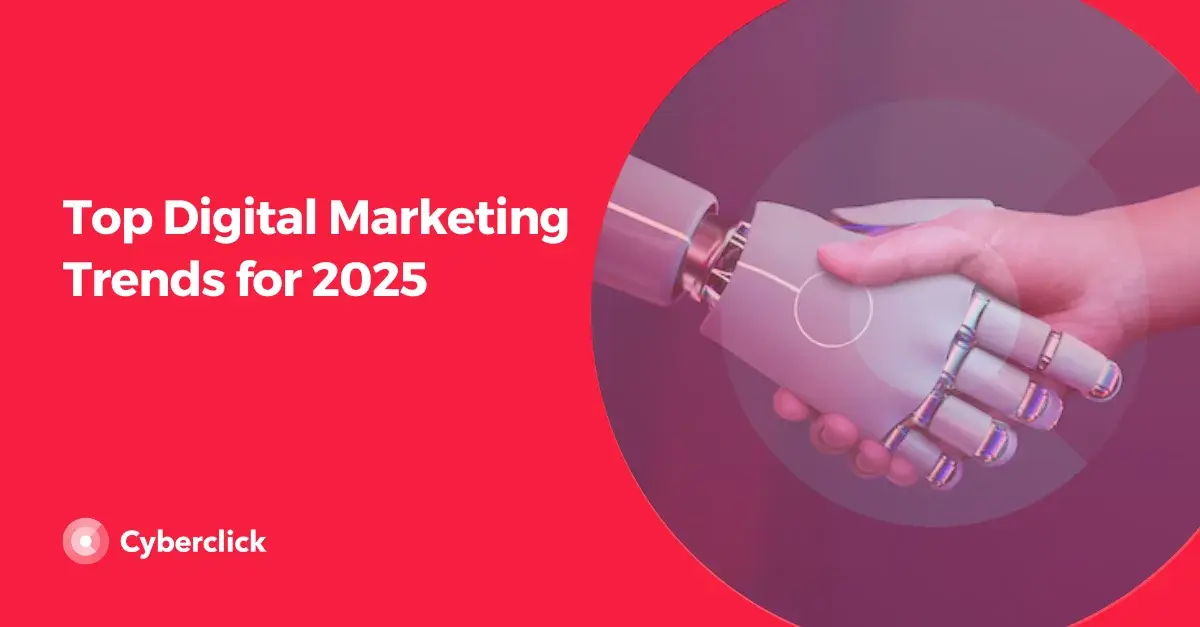We know that to err is human, but in an industry as competitive as digital marketing, mistakes can be costly.
There are many blunders that are very common in our industry and these can end up ruining the most well thought-out strategy. So without further ado, here are the biggest mistakes in digital marketing and, most importantly, how you can avoid them.

The 10 Biggest Digital Marketing Mistakes
1. Not Taking Advantage of Your Content
Creating quality content that really adds value to the user is not an easy task, since it requires many hours of creative planning and production work. If you do not make the most of each piece of content, this effort will be multiplied because you will have to start from scratch each time.
To avoid this digital marketing mistake, you have to create 360 content campaigns. For example, if you are creating a landing page where people can come to download an ebook, structure a series of content around it.
-
A series of blog posts covering different sections in greater detail that are designed for SEO and include a call to action to download the ebook.
-
Several videos focused on the same topic, which can be used to enrich the articles and can also posted on YouTube with a call to action.
-
Infographics that serve to illustrate the ebook and articles and can serve as shareable content in itself.
-
Or even podcasts that take advantage of the audio of the videos already created.
2. Constantly Changing Your Social Ads Campaigns
Although it is good to continuously optimize your online campaigns, over-optimization also has its own risks.
When you create social ad campaigns on Facebook, Instagram, or LinkedIn, you'll encounter many targeting variables. These platforms have machine learning algorithms that help improve campaign results, but for them to work, they need to learn gradually.
Therefore, when you create a new social ad campaign, leave it unchanged for at least 3 or 4 days. This way, the algorithm will increasingly optimize the audience it shows the ads to and you will see how the costs per click and per conversion go down more and more. Once this time period has passed, you can begin to evaluate the results and make changes to further optimize the campaign
3. Launching a Campaign without Knowing How You Will Measure Results
In digital marketing, you can measure practically everything you do in real time, but not everyone takes advantage of this power, which is definitely a mistake!
Before launching a campaign, you need to be very clear on what your objective is, what specific action you will consider as a conversion, and what results you expect to obtain. For example, "I want to generate 50 leads per day, with a cost of 2 euros per lead and a conversion rate of 3%."
These figures will allow you to evaluate the campaign and see if you are getting closer to the objective you set. You may not always get it right the first time, but the good thing is that you can learn very quickly. In a few days you will be able to evaluate the first set of data and make changes if necessary.
4. Having Too Many Targets for a Single Action
One of the big mistakes in digital marketing is not knowing how to prioritize and wanting to everything at the same time. For example, you may want to generate leads and increase brand awareness, but you also expect direct conversions and if you do not get them then you consider that the action has not worked.
To clarify priorities, think about the fact that when a user initiates a conversion process, he or she is taking a series of steps. What you need is to make this conversion path very clear and set a single call to action for each campaign. For example, prompt users watch a video, download a piece of content or contact you. The clearer the path and the fewer distractions there are, the better the results will be.
5. Launching a Landing Page without Doing an A/B Test
A/B tests are a secret weapon that help you optimize marketing and improve every element of your campaigns. They can (and should!) be used with all types of content, but there are two that are especially important because of their influence in generating results: landing pages and email marketing campaigns.
Therefore, always launch two different versions of your landing page to be able to compare the results from the first minute. You can continuously experiment with different elements, such as the page layout, the title, or the call to action. After a few tests, you will have much more information about what really works and your landing page will generate many more conversions.
6. Writing Blog Articles without Research
Generating content is labor intensive, so you have to make sure that the effort is going to achieve the maximum results.
Valuable content is content that is tailored to the customer's needs and pain points, and your customers may be very different from you. Therefore, the first thing to do is to research the customer's needs based on:
-
Keyword research. Using a tool such as Google Keyword Planner, SemRush or something similar, consult which searches related to your products and services are the most frequent, what is the volume of queries, and what is the competition.
-
Questions from your own customers, for example, those they often ask the sales team.
With all this information, you will be able to create content and blog posts that has a greater possibility of positioning well and generating more traffic.
7. Forgetting Technical SEO
Focusing SEO only on keywords is a mistake. Yes, it is important to thorough good keyword research, write quality articles, publish pillar pages, and topic clusters, etc. but the reality is that the technical part of your website also affects positioning.
To avoid making this digital marketing mistake, you should collaborate with technical SEO experts to help you improve CSS and load times, maintain an updated sitemap and robots.txt file, fix 404 errors, make correct 301 redirects, and other key elements for the efficiency of your website and its positioning in search engines.
8. Sending Mass Mailings to Your Database
Sending emails all at once to your entire database may give results in the short term, but in the long term the relationship with the customer will suffer and you will not be taking advantage of the full potential of the data.
To avoid this digital marketing mistake, segment the database from the beginning, both with the data provided by the users themselves in various form, and with what you can derive from their behavior. For example, the products they buy, the frequency of orders or the pages they visit on your website.
Email marketing automation is a key opportunity to offer more personalization. In a short time, the vast majority of companies will be segmenting based on behavior, so if you can get ahead of the curve in your industry, you can create a better user experience.
9. Failing to Understand the Customer Journey and When to Contact the Customer
The buying processes of different brands vary quite a bit. They can be longer, shorter, with different touch points, etc. Universal solutions do not work, so you have to understand the process at your company very well.
When you know the customer journey, you understand all the phases and know what information the user needs at each point. This way, you can reach them at the right time and with the right solution to their problem.
10. Disregarding Customer Centricity
We live in a time when consumers are faced with a wide range of products and services, so people choose companies that make them feel good and that take their needs into account. Therefore, the focus must always be on the customer.
For new companies, it is easier to adapt to this paradigm from the beginning. But for those who have been around for many decades it can be a complicated challenge, as they tend to be organized around products and efficiency.
It may be necessary to rethink your entire system of delivering value and change as many aspects as needed to make the user experience as easy as possible. The key concept is to make the process "frictionless" by creating a smooth buying process, with a great customer experience where simplicity reigns from start to finish.
Responsable de la estrategia de contenidos y visibilidad en Cyberclick, con enfoque Allbound y especialización en posicionamiento SEO, GEO y automatización con IA. Gestión avanzada del CRM con HubSpot: base de datos, workflows, lead nurturing, scoring y reporting. Experiencia en marketing digital, comunicación corporativa y periodismo, uniendo estrategia, creatividad y tecnología para captar y convertir leads cualificados.
Responsible for content and brand visibility strategy at Cyberclick, with an Allbound approach and specialization in SEO, GEO (Generative Engine Optimization), and AI-powered automation. Advanced HubSpot CRM management: database segmentation, workflows, lead nurturing, scoring, and reporting. Background in digital marketing, corporate communications, and journalism—combining strategy, creativity, and technology to attract and convert qualified leads.





Leave your comment and join the conversation